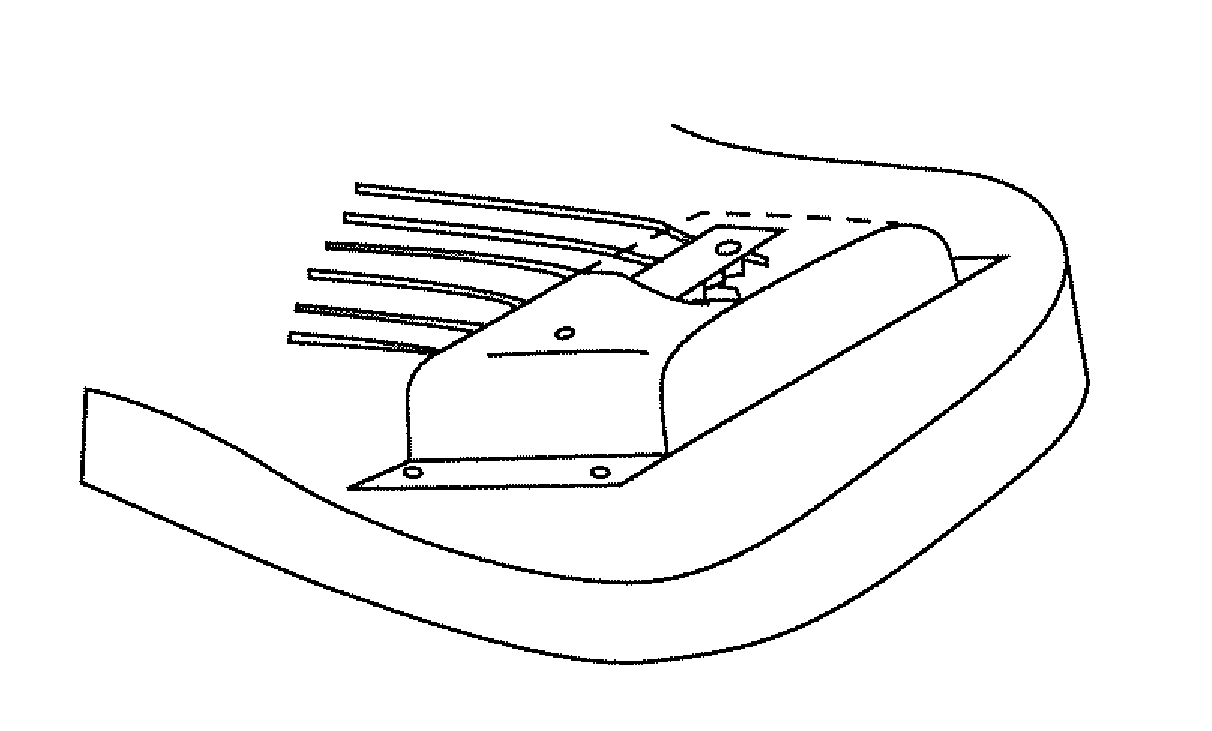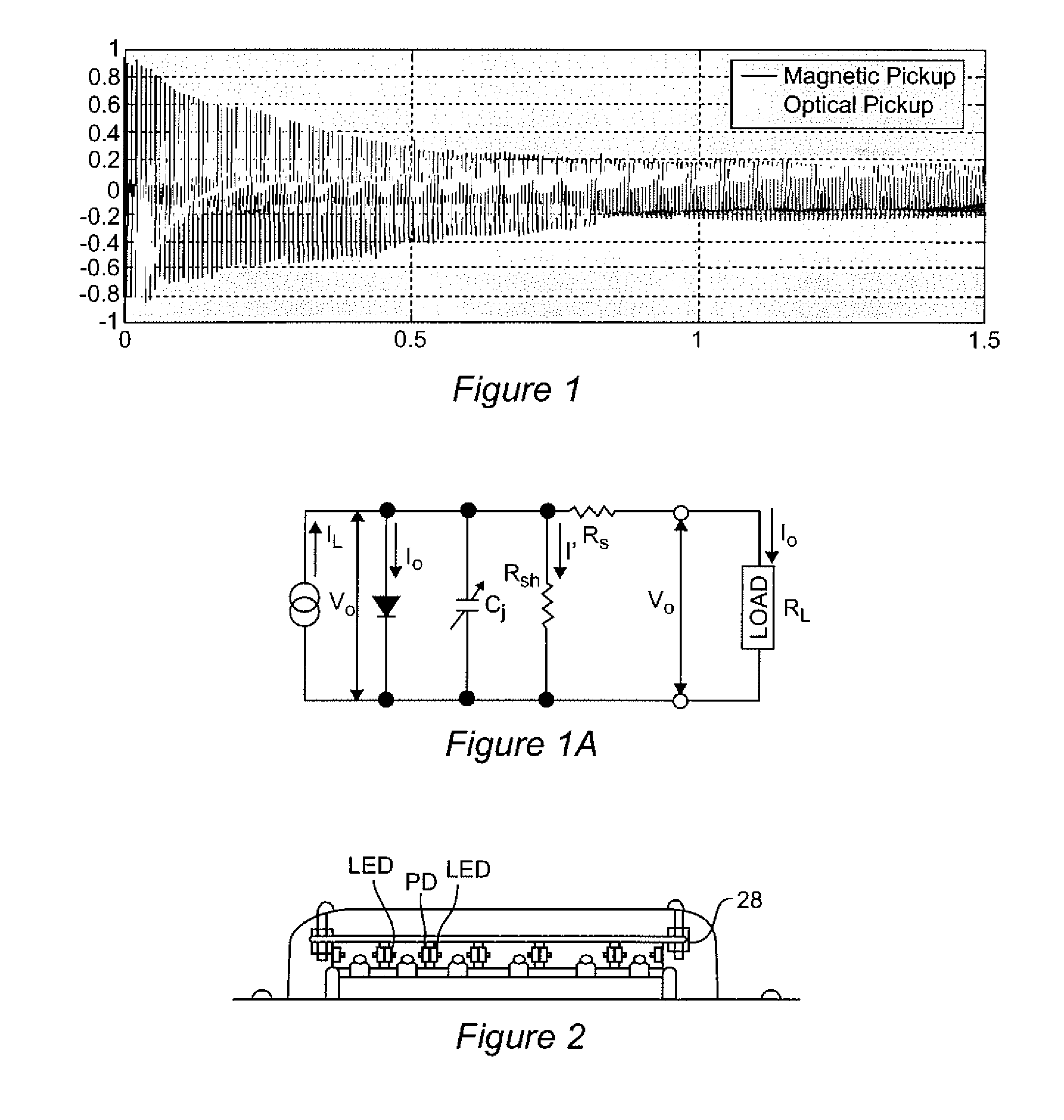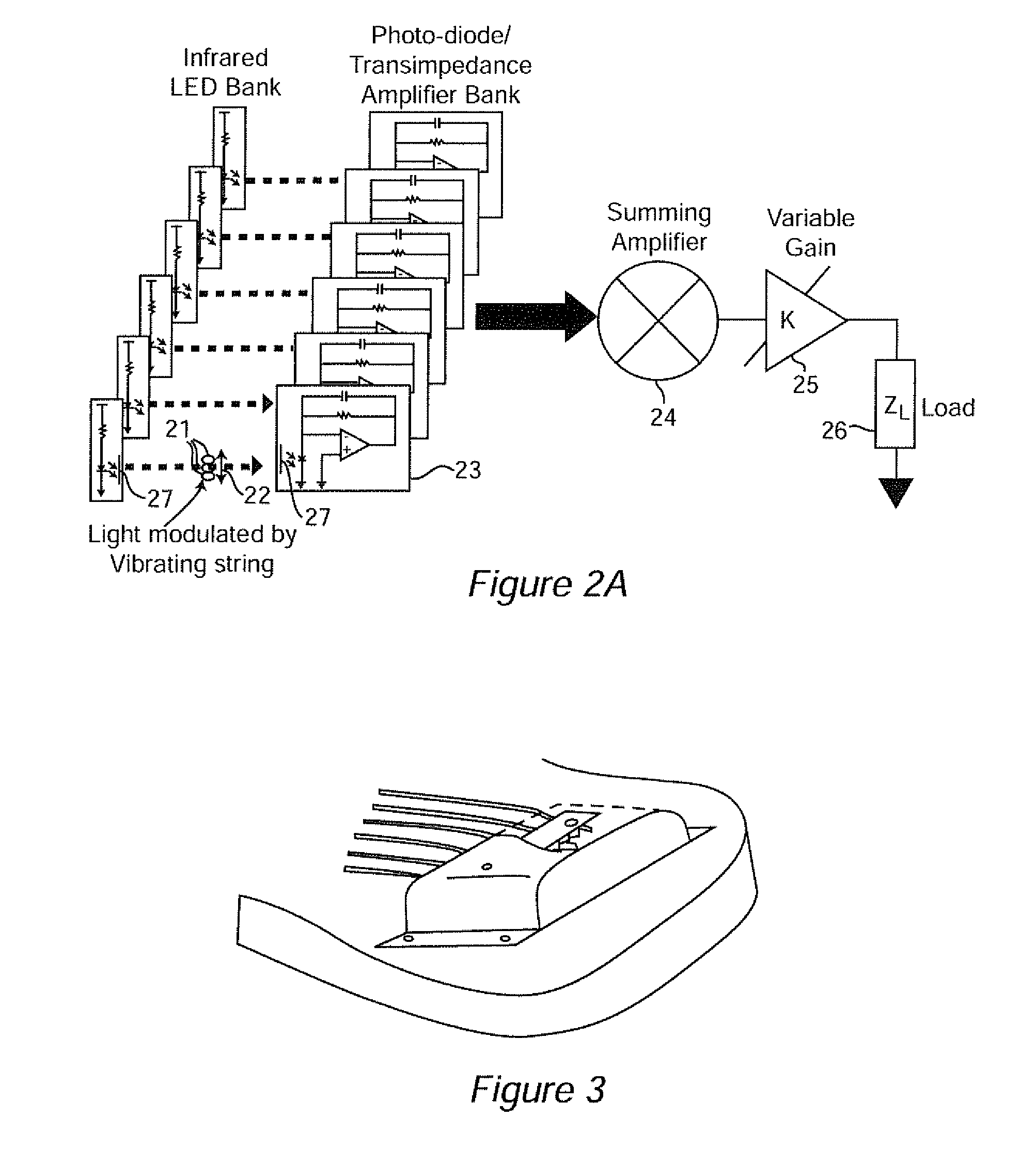Optical electric guitar transducer and midi guitar controller
a transducer and electric guitar technology, applied in the field of vibration transducers, can solve the problems of less than optimal transducers for stringed instruments, the gamut of audio effects of which music synthesizers are capable may not be as facile or well-trained for keyboard use, and achieve the effect of altering the acoustic properties of the instrument and being easy to attach to a wide variety of string instruments
- Summary
- Abstract
- Description
- Claims
- Application Information
AI Technical Summary
Benefits of technology
Problems solved by technology
Method used
Image
Examples
first embodiment
[0059]The invention provides a pitch to MIDI control signal conversion which accommodates polyphonic (e.g. detection of plural simultaneous pitches) conversion quite easily in the case of stringed instruments such as a guitar. Specifically, referring to FIGS. 9 and 4, the raw transducer outputs 49 for each string, as depicted at 90 of FIG. 9, can be connected to a six channel analog to digital converter as depicted at 91 of FIG. 9. The spectrum of the vibration of each string is then determined, preferably using a fast Fourier transform (FFT) from the resulting digital data as depicted at 92. The data representing the spectrum is then fed into a spectrum based pitch detector, preferably embodied in hardware description language (HDL) and preferably programmed on a field programmable gate array (FPGA). The FPGA allows for parallel concurrent processing of the pitch detection for each of the strings of the instrument. If the optical transducer described above is used to monitor the vi...
second embodiment
[0061]Much more rapid response speed for pitch to MIDI conversion is provided by a pitch to MIDI converter which will now be described. The neural network method proposed in this second and currently preferred embodiment has several advantages over traditional methods. The first and most important advantage is that searching for a specific frequency or period is not necessary since the network is trained to recognize relationships between all data points in a single block to classify the data. Due to this the quality of the frequency spectrum is not as high as it would be for traditional methods; this allows processing time to be faster. Another advantage over tradition methods is the natural parallel structure of neural networks that can allow for efficient implementation on hardware or FPGA (Field Programmable Gate Array) devices, though because of the computational efficiency of the networks common microcontrollers or DSP devices are typically suitable.
[0062]To estimate pitch wit...
PUM
 Login to View More
Login to View More Abstract
Description
Claims
Application Information
 Login to View More
Login to View More - R&D
- Intellectual Property
- Life Sciences
- Materials
- Tech Scout
- Unparalleled Data Quality
- Higher Quality Content
- 60% Fewer Hallucinations
Browse by: Latest US Patents, China's latest patents, Technical Efficacy Thesaurus, Application Domain, Technology Topic, Popular Technical Reports.
© 2025 PatSnap. All rights reserved.Legal|Privacy policy|Modern Slavery Act Transparency Statement|Sitemap|About US| Contact US: help@patsnap.com



